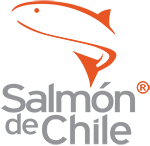More than 70% of the earth is covered by water1 – yet aquatic ecosystems produce less than 5% of our calories.2 We can do better through aquaculture while taking pressure off land-based farming. As demand increases to produce the food required to feed a growing global population, and as the limits of traditional agriculture become more apparent, people will look to the oceans. Current wild fish stocks will not be able to fulfill growing demand and reducing seafood consumption altogether doesn’t align with expert recommendations for dietary health.3 Aquaculture can bridge the gap, and salmon farming plays an important role.

Salmon Aquaculture Will Continue to Grow. Chilean companies strive to reduce environmental impact while improving long-term sustainability as global demand grows. Though more improvement is needed, data shows consistent progress on multiple sustainability measures since 2016. We have made significant progress and will continue to do better.
References
- https://www.usgs.gov/special-topic/water-science-school/science/how-much-water-there-earth?qt-science_center_objects=0#qt-science_center_objects
- Barrange, M., Tansey, H., Martins, C., Velings, M., Koehring, M. (2021, March). How to scale up aquaculture production: identifying the steps to ensure that aquaculture develops in a healthy, sustainable, and affordable way. The Economist Group’s 8th Annual World Ocean Summit Virtual Week.
- https://www.dietaryguidelines.gov/
- https://globalsalmoninitiative.org/en/about-salmon-farming/climate-change/
- https://www.edf.org/sites/default/files/documents/Infographic_World%20Oceans%20Day_1.pdf
